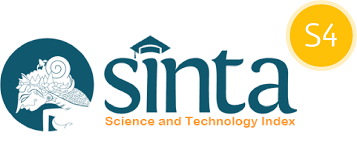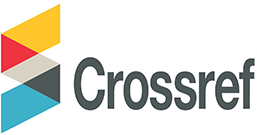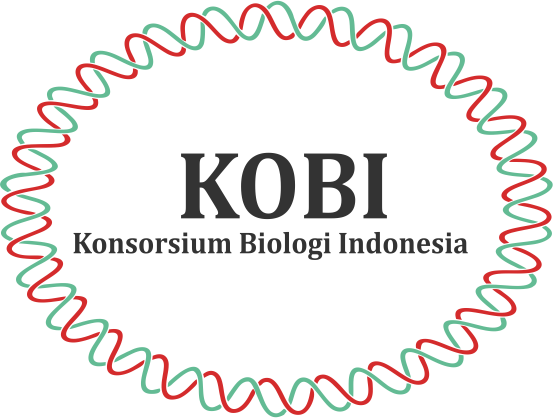Identification and Collection of Macro Fungi (Basidiomycota: Agaricales) From Baturraden Botanical Garden, Banyumas
Abstract
Agaricales is a group of macrofungi which comprises of many edible and poisonous members. Agaricales is characterized by having a fruiting body that is fleshy in some species and few species are not fleshy, lamellae, and stipe. The group usually grows well in quite moist areas and it cannot be found in dry conditions. The Indonesian Agaricales has not been intensively studied and there is still very few information on its diversity. While in fact, the diversity of Indonesian Agaricales is high due suitable environment and humidity for these fungi to grow. However, there are only a few species that have been identified. Under the circumstances above, this research is aimed to identify the Indonesian Agaricales, particularly from Baturraden Botanical Garden, Banyumas, Central Java and to collect the specimens as dry herbarium. The research involved collection, description, identification, preservation, and documentation of specimens, and the method used a survey with purposive random sampling. The collected Agaricales were identified by using both macromorphological and micromorphological characters. The macromorphological characters as shape, size, color, margin, surface, the flesh of the pileus, lamellae, and stipe were examined. The micromorphological characters as spores and the basidium were examined. Nine specimens had been collected in Baturraden Botanical Garden and were identified to 6 genera that belong to 4 families and 2 unidentified species, namely Hydropus sp., Mycena sp., Panellus sp., Psathyrella sp., Simocybe sp., DRRE 002, DRRE 010.
References
Arini, D. I. D. & Christita, M., 2016. Keanekaragaman Makrofungi di Cagar Alam Gunung Ambang Sulawesi Utara dan Peluang Potensinya. Proceeding Seminar Nasional Biodiversitas VI: 49-59.
Firdhausi, N. F. & Basah, A. W. M., 2018. Inventarisasi Jamur Makroskopis Di Kawasan Hutan Mbeji Lereng Gunung Anjasmoro. Jurnal Biology Science & Education, 7(2): 142-146.
Gandjar, I., Sjamsuridzal, W. & Oetari, A., 2006. Mikologi Dasar dan Terapan. Jakarta: Yayasan Obor Indonesia.
Gardner, F. P., Peaece, R. B. & Mitchel, R. L., 1991. Fisiologi Tanaman Budidaya. Jakarta: UI Press.
Kramadibrata, K., 2017. Keanekaragaman Gloromycota di Kebun Raya Baturraden dan Sekitarnya di Gunung Slamet. Berita Biologi, 12(2): 217-222.
Proborini, M. W., 2012. Eksplorasi dan Identifikasi Jenis-Jenis Jamur Klas Basidiomycetes di Kawasan Bukit Jimbaran Bali. Jurnal Biologi, XVI(2): 45-47.
Sari, I. M., Linda, R. & Khotimah, S., 2015. Jenis-Jenis Jamur Basidiomycetes di Hutan Bukit Beluan Kecamatan Hulu Gurung Kabupaten Kapuas Hulu. Protobiont, 4(1): 22-28.
Sopialena, N., Akhsan, A. & Suryadi, J. N., 2018. The identification of soil fungi isolated from rhizosphere in different varieties of jali (Coix lacryma-jobi) in Loa Kulu, Kutai Kartanegara, Indonesia. Asian Journal of Agriculture, 2(2): 44-47.
Sumarni, S., Angking, Y. & H, R. R., 2017. Identifikasi Jenis Jamur Makroskopis Di Kawasan Hutan Lindung Bukit Rentap Desa Ensaid Panjang Kecamatan Kelam Permai Kabupaten Sintang. Publikasi Informasi Pertanian, 25(13): 148-163.
Wahyudi, T. R., Rahayu, S. & Azwin, 2016. Keanekaragaman Jamur Basidiomycota di Hutan Tropis Dataran Rendah Sumatera, Indonesia (Studi Kasus di Arboretum Fakultas Kehutanan Universitas Lancang Kuning Pekanbaru). Jurnal Kehutanan, 11(2): 22-23.
Yunida, N. & Yeni, L. F., 2014. Inventarisasi Jamur di Gunung Senujuh Kabupaten Sambas dan Implementasinya Dalam Pembuatan Flash Card. Jurnal Pendidikan dan Pembelajaran, 3(10): 1-16.














_copy.png)



